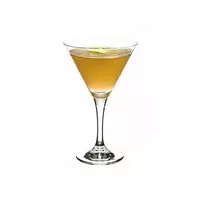Quince syrup

The birthplace of this interesting plant is presumably West Asia, although today quince is also cultivated in Central Asia, Crimea, the Caucasus and Ukraine. Many gardeners deliberately breed quince for its fruits, which are rightfully considered a source of substances valuable to the human body.
Large quince fruits are distinguished by a lemon or dark yellow skin color, which is first covered with fluffy felt, which disappears as it matures. Depending on the variety, the quince may resemble an apple or pear, from which this fruit differs in harder pulp and a multi-seeded nest. In addition, the quince pulp contains quite a few rocky cells, so it is slight, but at the same time fragrant, sweet or sour-sweet.
In fresh form, fragrant quince fruits are almost not consumed due to their somewhat astringent taste and rather coarse flesh, if only with tea instead of lemon. Interestingly, the wedges of fresh quince, which are added to borscht or cabbage soup, give the finished dish a pleasant sour taste. In addition, for a long time, these fruits have been baked with honey, and eastern cuisine is characterized by the preparation of quince stuffed with ground beef or beans.
For the most part quince is used for the manufacture of various assortment of canned products - compotes, jam, jam, povidl, jelly, candied fruits, syrup, confitur, puree and many other blends. Making fragrant quince syrup is a fairly common way to preserve this fruit culture. Moreover, you can buy it in a ready-made form or make it yourself at home.
Quince syrup is prepared very simply. Clean fresh fruits are cut into pieces, folded into dishes and poured into layer-by-layer sugar sand at a rate of 1 to
1.
3. Within 6 - 12 hours, the fruits stand until the sugar is completely dissolved, after which the released juice is merged and brought to a boil, boiled for about five minutes. Such quince syrup can be used for a wide variety of purposes, in particular for the preparation of refreshing drinks or dessert dishes. In addition, the remaining fruits are great for making homemade candied fruits.
Quince syrup is rich in vitamins C, PP, E, group B, as well as provitamin A. It contains a lot of micro- and macronutrients, apple, tartronic, citric acids along with pectin substances. It has been proven that natural quince syrup has antiseptic, general strengthening, astringent, hemostatic and diuretic properties. It is advised to use it for cardiovascular diseases, low blood, ailments of the respiratory tract and gastrointestinal tract, asthma.
215 kCal quince syrup
Energy value of quince syrup (Ratio of proteins, fats, carbohydrates - ju):
Proteins: 0.3 g (~ 1 kCal)
Fats: 0 g (~ 0 kCal)
Carbohydrates: 36g (~ 144 kCal)
Energy ratio (bj | y): 1% | 0% | 67%
 Español
Español Français
Français Português
Português Русский
Русский 简体中文
简体中文 繁體中文
繁體中文 日本語
日本語 한국어
한국어 العربية
العربية Türkçe
Türkçe Қазақ
Қазақ Deutsch
Deutsch Italiano
Italiano Українська
Українська
